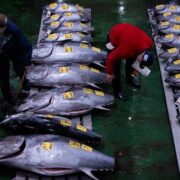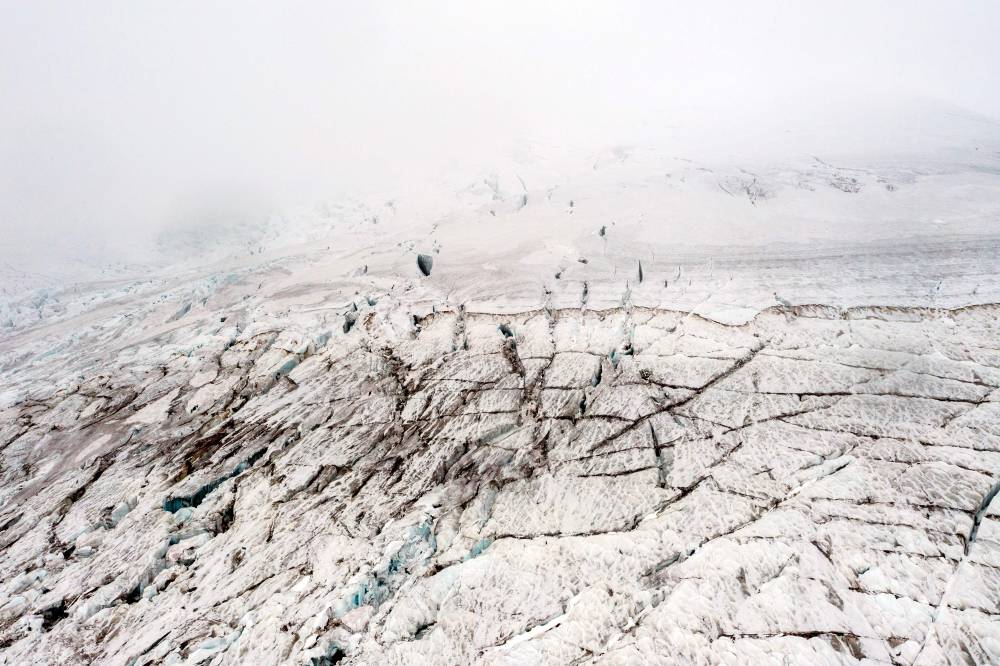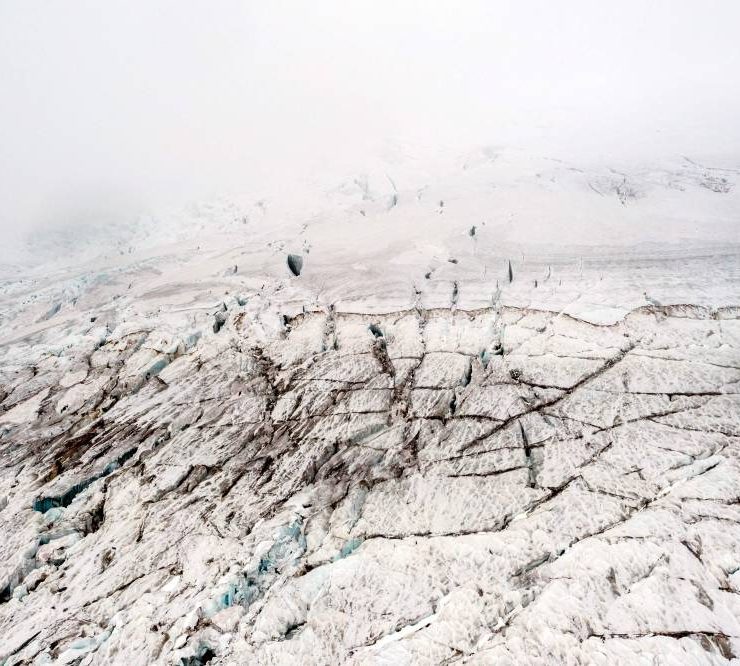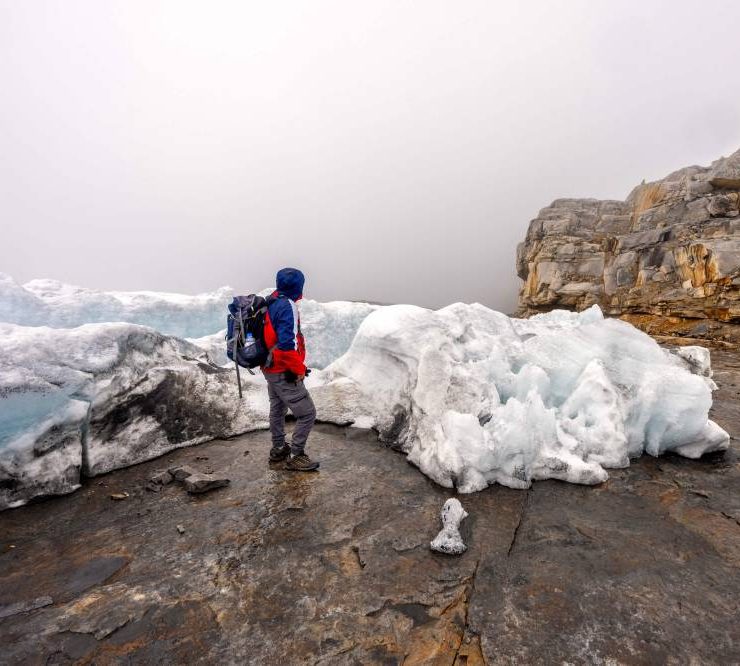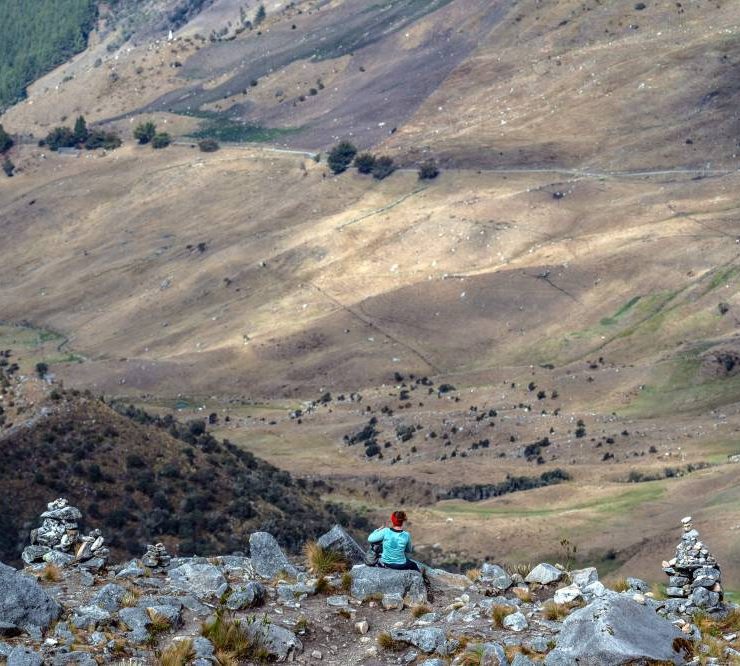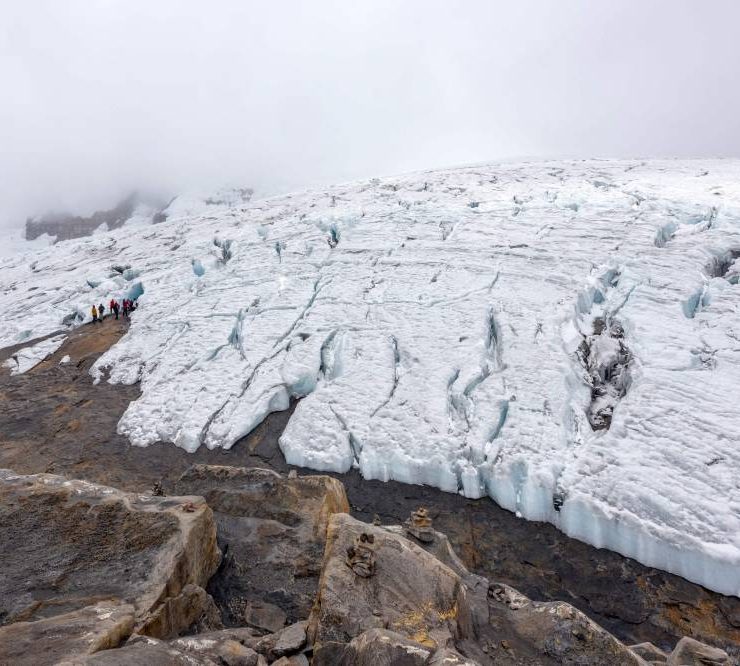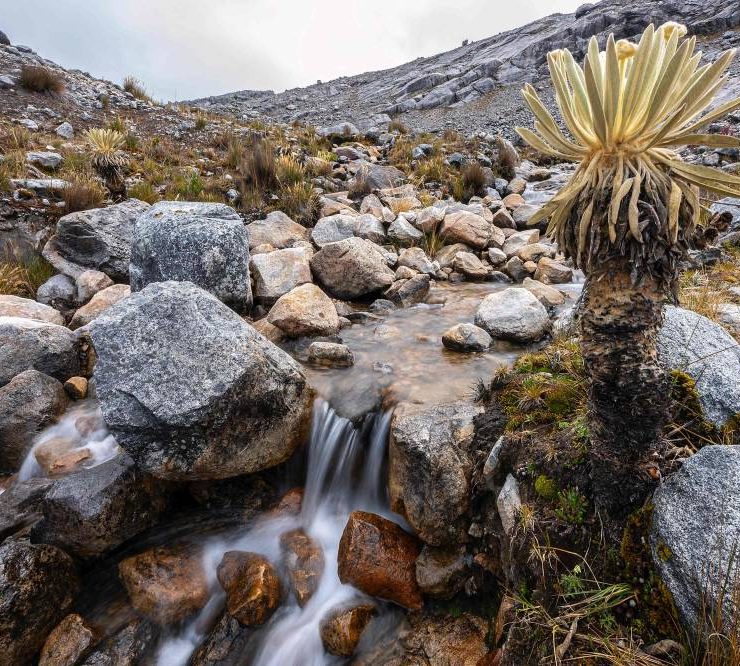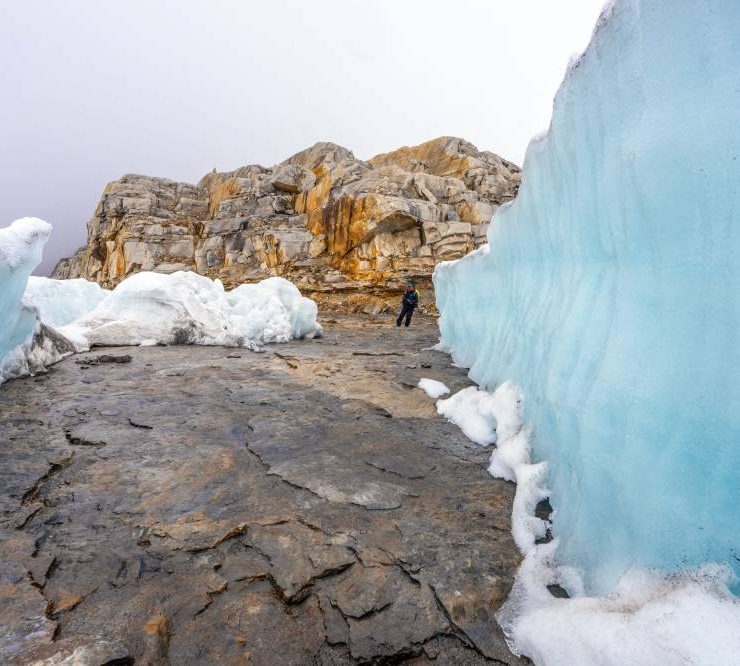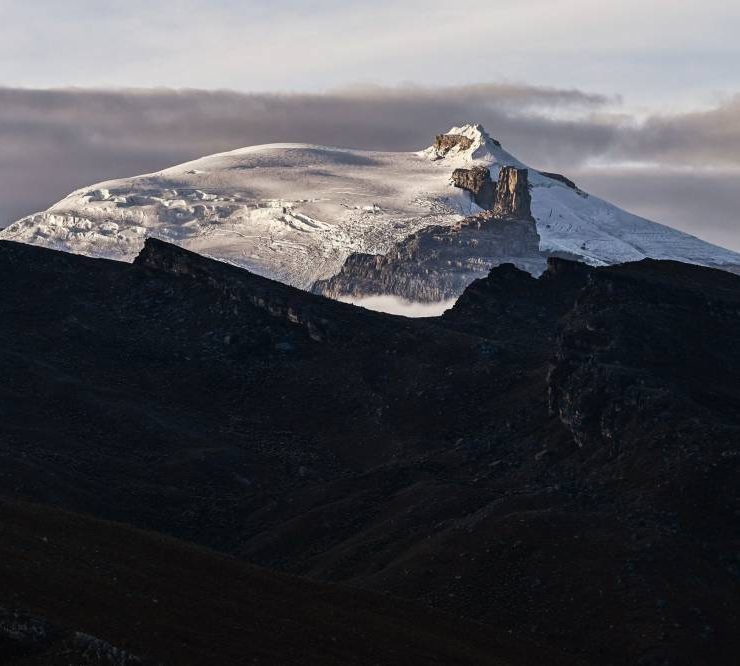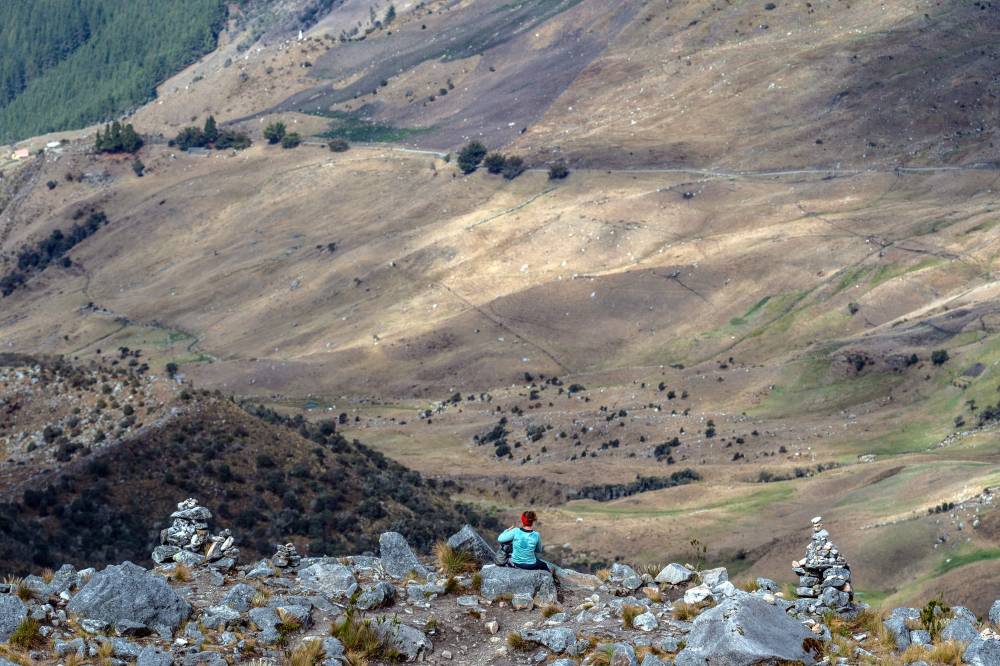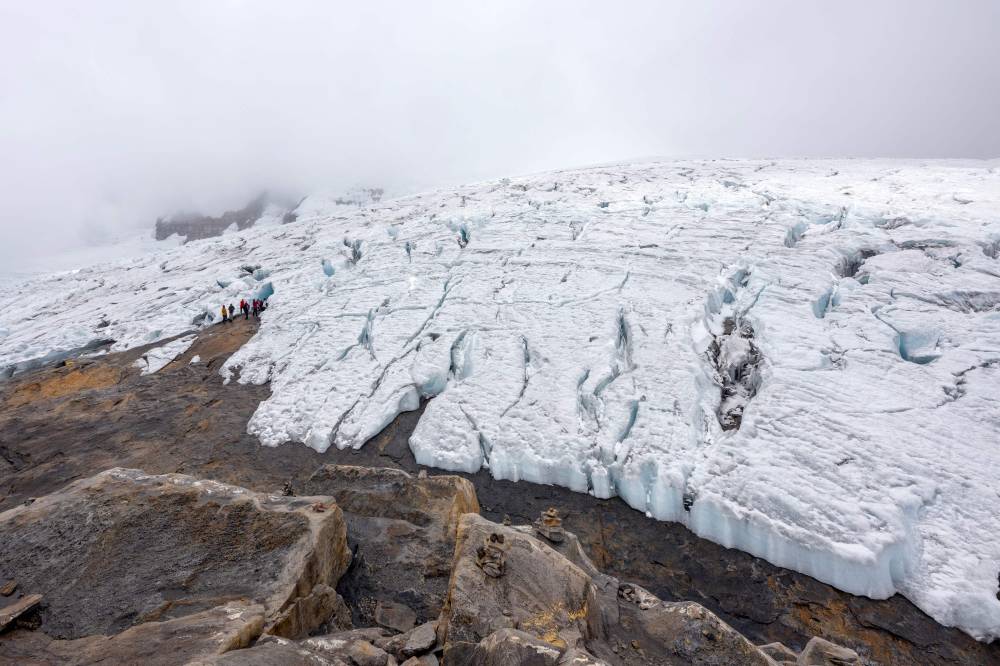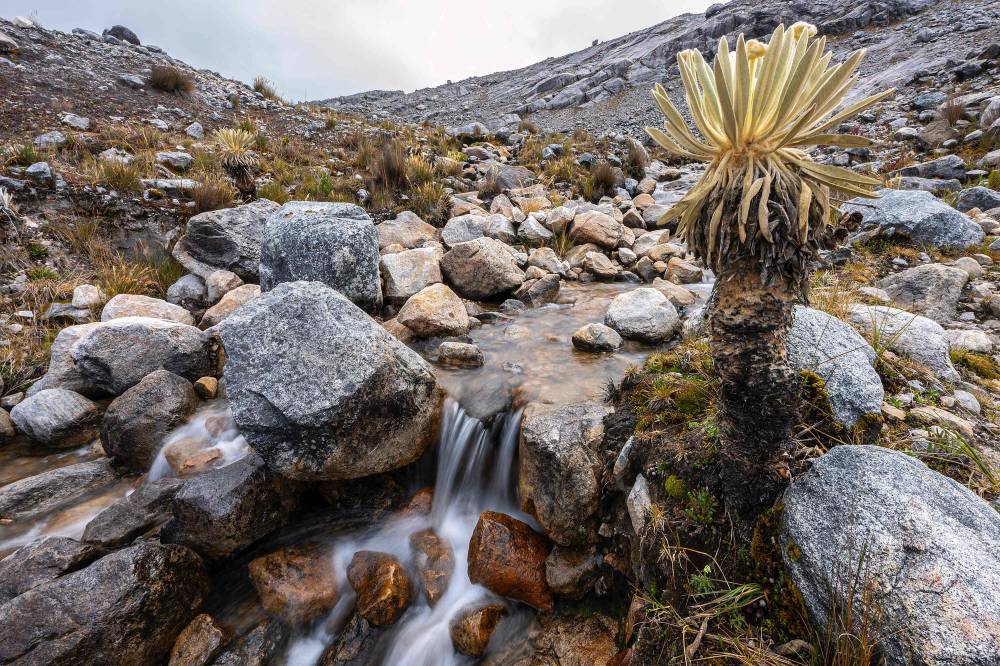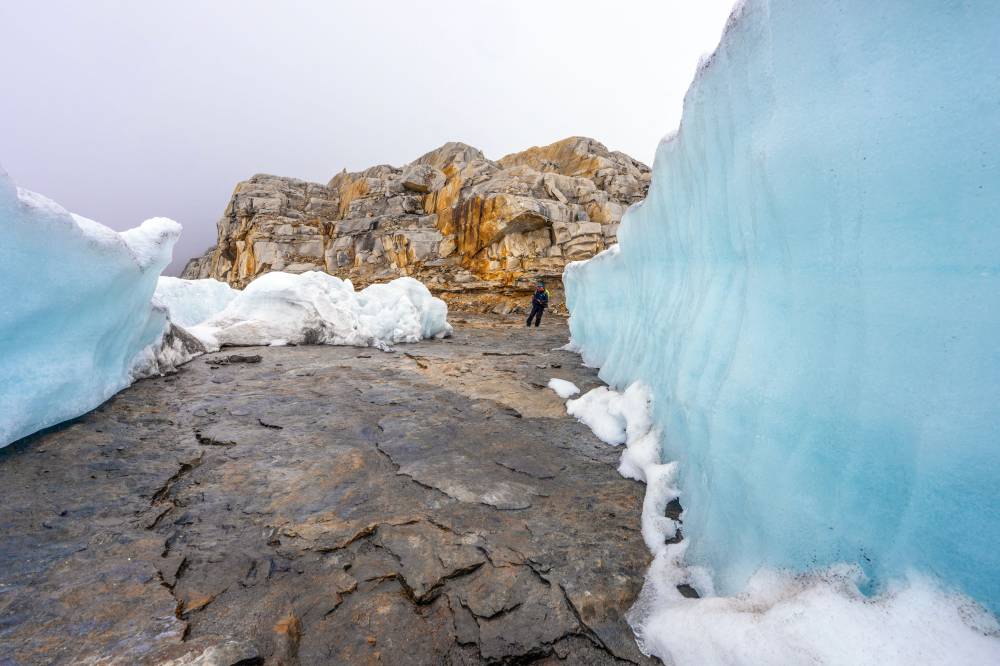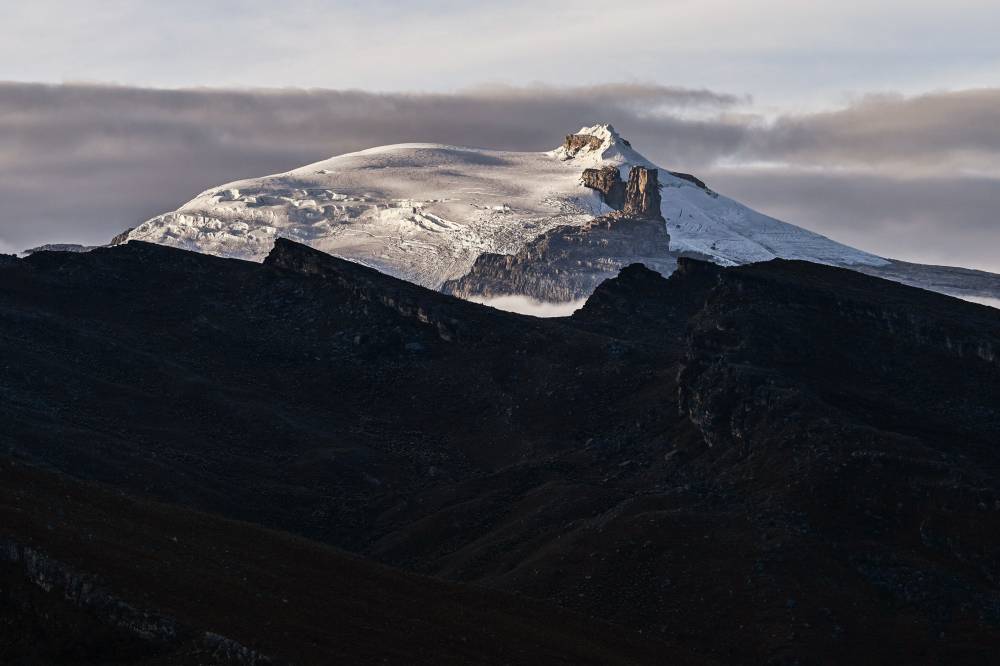Ritacuba Blanco: death of a Colombian glacier
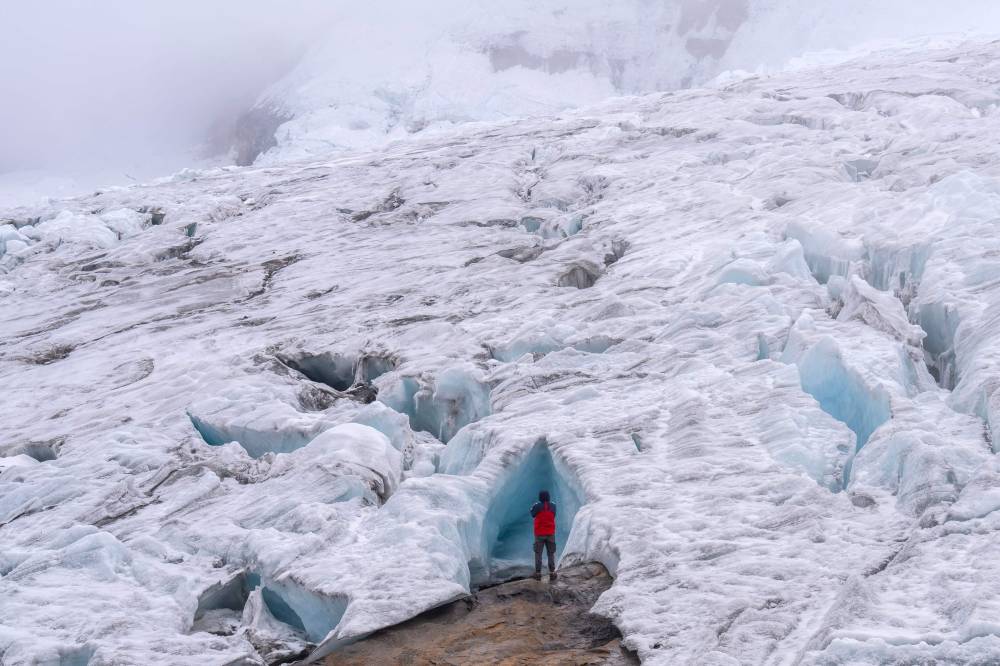
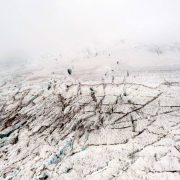
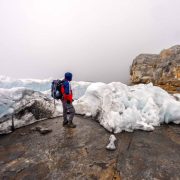
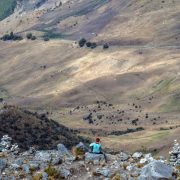
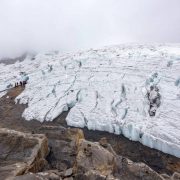 +3
+3 Ritacuba Blanco: death of a Colombian glacier
Aerial view of the Ritacuba Blanco glacier at El Cocuy National Natural park in Boyaca province, Colombia on April 19, 2024. The Ritacuba Blanco glacier, one of Colombia's highest snow-capped peaks, should be covered by a blanket of homogeneous snow. But a brutal El Niٌo phenomenon melted it and exposed gigantic crevasses, a sign of its agony. (Photo by Luis ACOSTA / AFP) / TO GO WIHT AFP STORY BY DAVID SALAZAR
Ritacuba Blanco: death of a Colombian glacier
A tourist explores the Ritacuba Blanco glacier at El Cocuy National Natural park in Boyaca province, Colombia on April 19, 2024. The Ritacuba Blanco glacier, one of Colombia's highest snow-capped peaks, should be covered by a blanket of homogeneous snow. But a brutal El Niٌo phenomenon melted it and exposed gigantic crevasses, a sign of its agony. (Photo by Luis ACOSTA / AFP) / TO GO WIHT AFP STORY BY DAVID SALAZAR
Ritacuba Blanco: death of a Colombian glacier
Tourists walk along the Ritacuba's trail at El Cocuy National Natural park in Boyaca province, Colombia on April 19, 2024. The Ritacuba Blanco glacier, one of Colombia's highest snow-capped peaks, should be covered by a blanket of homogeneous snow. But a brutal El Niٌo phenomenon melted it and exposed gigantic crevasses, a sign of its agony. (Photo by Luis ACOSTA / AFP) / TO GO WIHT AFP STORY BY DAVID SALAZAR
Ritacuba Blanco: death of a Colombian glacier
Tourists explore the Ritacuba Blanco glacier at El Cocuy National Natural park in Boyaca province, Colombia on April 19, 2024. The Ritacuba Blanco glacier, one of Colombia's highest snow-capped peaks, should be covered by a blanket of homogeneous snow. But a brutal El Niٌo phenomenon melted it and exposed gigantic crevasses, a sign of its agony. (Photo by Luis ACOSTA / AFP) / TO GO WIHT AFP STORY BY DAVID SALAZAR
Ritacuba Blanco: death of a Colombian glacier
A frailejon (Espeletia pycnophylla) is seen at the Ritacuba's trail at El Cocuy National Natural park in Boyaca province, Colombia on April 19, 2024. The Ritacuba Blanco glacier, one of Colombia's highest snow-capped peaks, should be covered by a blanket of homogeneous snow. But a brutal El Niٌo phenomenon melted it and exposed gigantic crevasses, a sign of its agony. (Photo by Luis ACOSTA / AFP) / TO GO WIHT AFP STORY BY DAVID SALAZAR
Ritacuba Blanco: death of a Colombian glacier
TOPSHOT - A tourist explores the Ritacuba Blanco glacier at El Cocuy National Natural park in Boyaca province, Colombia on April 19, 2024. The Ritacuba Blanco glacier, one of Colombia's highest snow-capped peaks, should be covered by a blanket of homogeneous snow. But a brutal El Niٌo phenomenon melted it and exposed gigantic crevasses, a sign of its agony. (Photo by Luis ACOSTA / AFP) / TO GO WIHT AFP STORY BY DAVID SALAZAR
Ritacuba Blanco: death of a Colombian glacier
TOPSHOT - The Pan de Azucar peak is seen from the Ritacuba Blanco peak at El Cocuy National Natural park in Boyaca province, Colombia on April 19, 2024. The Ritacuba Blanco glacier, one of Colombia's highest snow-capped peaks, should be covered by a blanket of homogeneous snow. But a brutal El Niٌo phenomenon melted it and exposed gigantic crevasses, a sign of its agony. (Photo by Luis ACOSTA / AFP) / TO GO WIHT AFP STORY BY DAVID SALAZAR
EL COCUY, COLOMBIA—Just a few months ago, the Colombian mountain peak of Ritacuba Blanco was covered in an unbroken layer of white ice and snow, just as it had been for as long as anyone can remember.
But with the South American country hit by the warming effects of the El Niño weather phenomenon since late last year, large cracks have suddenly appeared in the glacier covering the peak, exposing the rock underneath.
Experts say the glacier is melting at dizzying speeds, with climate change intensifying the effects of El Niño—which makes an appearance every two to seven years, and lasts about nine to 12 months.
The UN’s World Meteorological Organization (WMO) has said that record temperatures since June 2023 were partly caused by El Niño, “but heat-trapping greenhouse gases are unequivocally the main culprit.”
“The El Niño phenomenon is perhaps the worst thing that can happen to our snowy peaks or glaciers,” said Jorge Luis Ceballos, a glaciologist at the Institute of Hydrology, Meteorology and Environmental Studies (Ideam).
“There is no cloud cover and therefore no snowfall,” he pointed out.
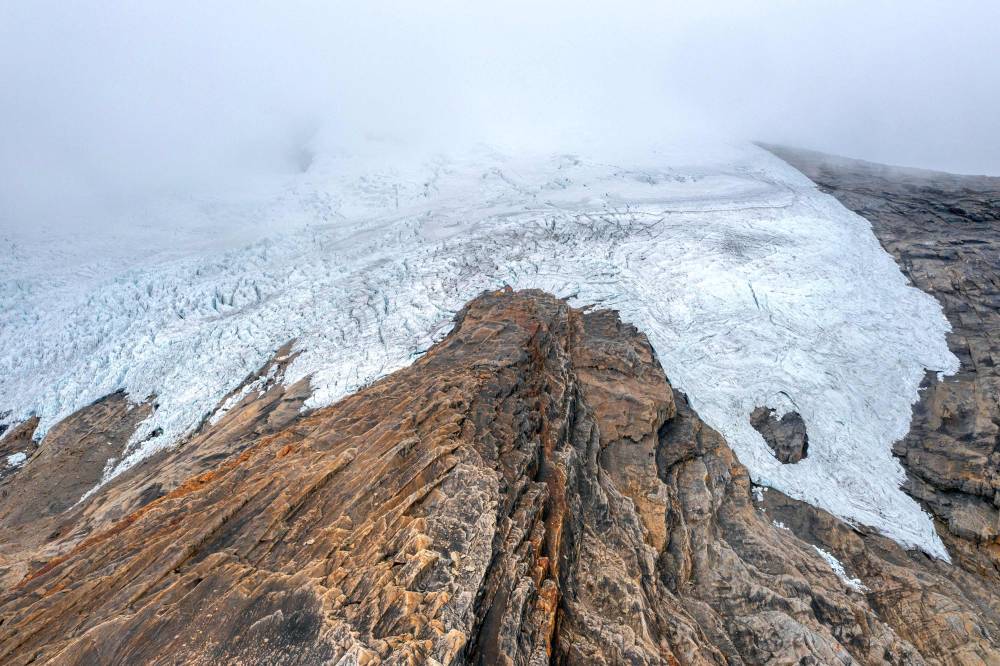
Aerial view of the Ritacuba Blanco glacier at El Cocuy National Natural park in Boyaca province, Colombia on April 19, 2024. The Ritacuba Blanco glacier, one of Colombia’s highest snow-capped peaks, should be covered by a blanket of homogeneous snow. But a brutal El Niٌo phenomenon melted it and exposed gigantic crevasses, a sign of its agony. (Photo by Luis ACOSTA / AFP) / TO GO WIHT AFP STORY BY DAVID SALAZAR.
Of the 14 tropical glaciers that existed in Colombia in the early 20th century, only six remain—and are fast receding.
Last chance for touristsRitacuba Blanco in the Sierra Nevada del Cocuy National Park, about 250 kilometers northeast of Bogota, is the most at risk.
“At the end of last year, the walls here were about 6 meters (20 feet) high … today, they are one meter,” glacier guide Edwin Prada told AFP on a recent ascent of the peak.
According to the most recent recorded data, in 2022, some 12.8 square kilometers of Ritacuba Blanco was covered in ice and snow—the lowest ever measured by Ideam.
More recently, “the snow melted due to a lack of precipitation and the ice was exposed to solar radiation, which accelerated the thaw,” said Ceballos.
Humberto Estepa, a resident of Guican—a village near Ritacuba Blanco—said he trembles every time he sets foot on the glacier.
Never has the thaw been “as noticeable as it is now,” he told AFP.
“Every time you go up it is worse.”
AFP is one of the world's three major news agencies, and the only European one. Its mission is to provide rapid, comprehensive, impartial and verified coverage of the news and issues that shape our daily lives.



